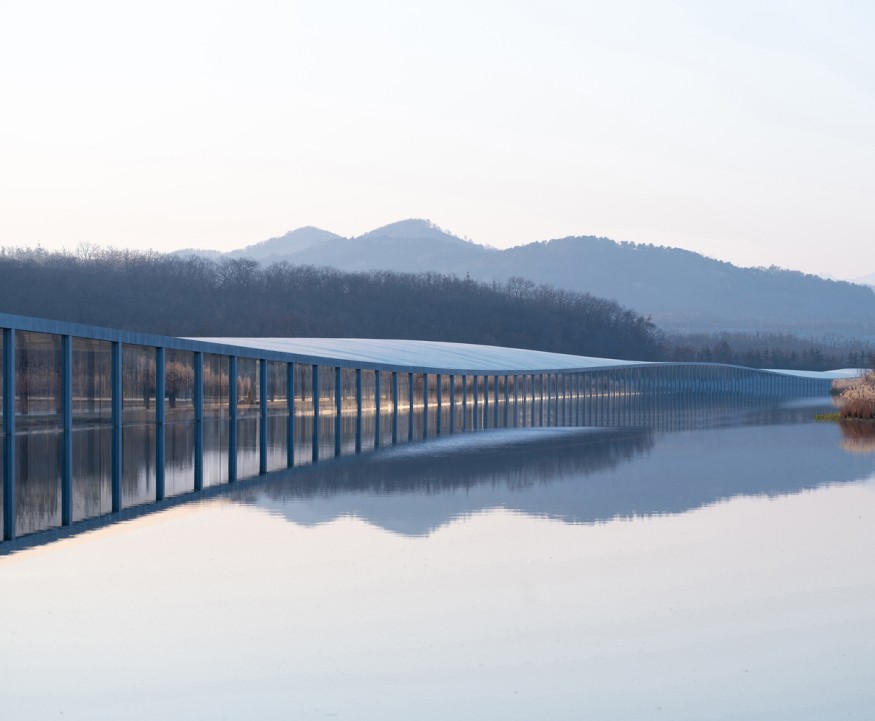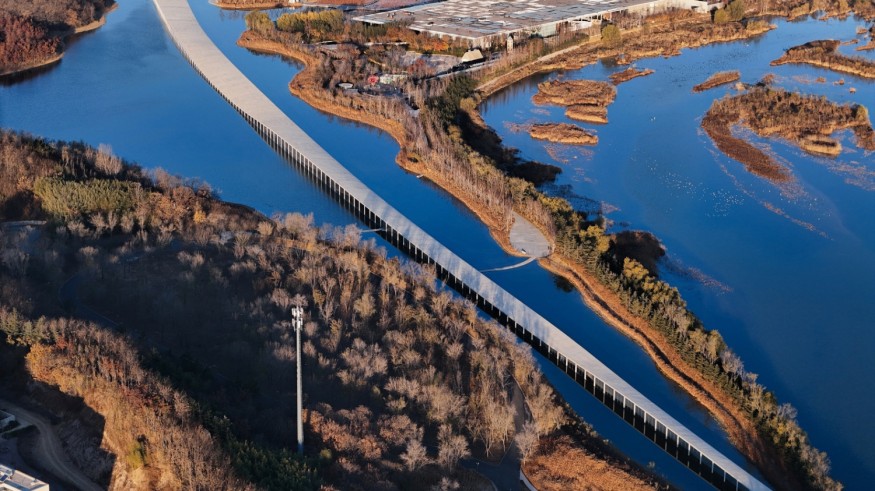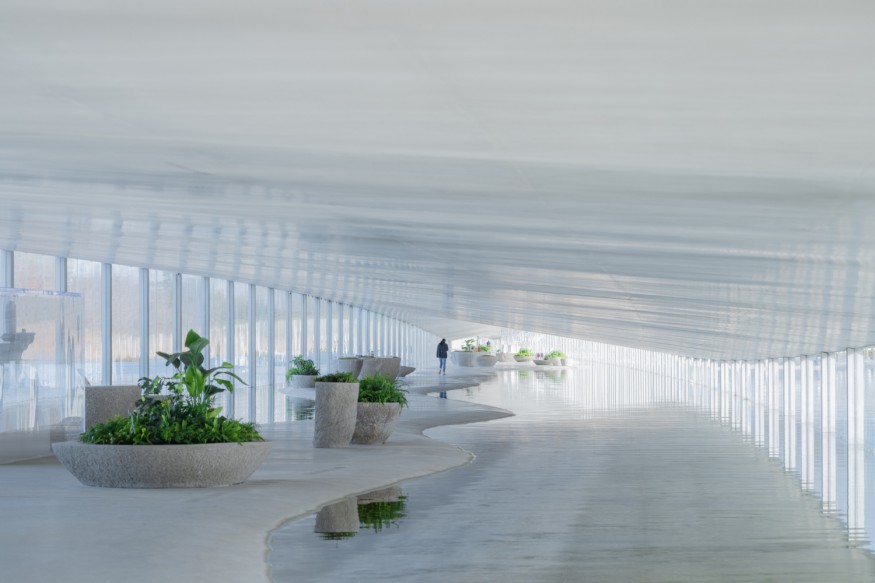Junya Ishigami’s 1-Kilometer-Long Zaishui Art Museum Floats Over Chinese Lake

In a groundbreaking architectural feat, Japanese architect Junya Ishigami has unveiled the awe-inspiring Zaishui Art Museum, a one-kilometer-long masterpiece emerging from an artificial lake in Rizhao, China's Shandong Province. This 20,000-square-metre linear marvel redefines museum design and fosters a harmonious relationship between architecture and the surrounding natural landscape.

A Linear Wonder on Water
Positioned at the entrance of a new development zone, the Zaishui Art Museum extends gracefully from one side of an artificial lake to the other, nearly covering the entire diameter of the lake. Ishigami's vision was to make the museum appear as if it were emerging from beneath the lake, creating a visual spectacle that challenged conventional architectural norms.

Columns of Connection
The museum's structure features parallel columns rising from the lake's bottom to support a thin concrete roof with a subtly undulating shape. These columns, repeated at regular intervals, redefine the water's surface, blurring the lines between interior and exterior. In Ishigami's words, the museum gives birth to "a new exterior" within its structural interior.
Also Read : Đạo Mẫu Museum by ARB Architects Unveils Cultural Heritage and Tradition Through Sacred Echoes
A Dance with Water and Glass
Glass paneling strategically inserted between the columns offers visitors breathtaking views of the lake, blurring the boundaries between the museum and its aquatic surroundings. Purposeful gaps between the building's floor and the lake's surface allow water to flow into the museum, submerging sections of the floor. This deliberate integration of water creates a dynamic and ever-changing environment, transforming the museum space with the seasons.
Nature Within and Beyond
Ishigami's design philosophy transcends the conventional separation between architecture and the environment. The undulating concrete roof mirrors the surrounding mountain range, embracing the landscape's natural contours. In some sections, the roof opens up to the sky, inviting the external nature into the museum. This seamless transition between inside and outside creates an immersive experience where visitors sense a continuous landscape that extends beyond the museum's physical boundaries.
The Gentle Giant of Architecture
Challenging the notion that Chinese architecture tends to be "closed off" from its surroundings, Ishigami envisions architecture as a "gentle giant" fostering a symbiotic relationship with the environment. The Zaishui Art Museum, incorporating water and open design, is a testament to Ishigami's belief in creating a connection between the natural and the artificial.

Visitors' Haven and Cultural Hub
Adjacent to the museum, Ishigami designed a visitor center concealed under an expansive grass-covered roof. The glass facade, supported by columns, and a wide opening facing the museum provide a seamless connection between the two structures. Walking paths on either side of the museum's elongated structure led visitors to the shore, where they can immerse themselves in the museum's natural beauty.
Adaptive Spaces for Artistic Expression
Currently hosting a chocolate-themed art exhibition, the Zaishui Art Museum is adaptable to various exhibitions and retail concepts in the future. Ishigami's design ethos allows for the flexible use of the space, ensuring that the museum remains a dynamic and evolving cultural hub.
The Zaishui Art Museum by Junya Ishigami invites people to experience art in an environment where architecture and nature coexist, transcending conventional boundaries. This one-kilometer-long wonder is more than just a museum; it's a monument to the boundless possibilities that arise when nature and architecture dance together delicately, giving everyone who enters an immersive and life-changing experience.
From Digital Models to 3D-Printed Homes: Jaspreet Kaur Lall Explains How the Innovation Changes the Construction Industry

Future Belongs to Green Construction: Sampath Kumar Paspunoori Explains One of the Key Trends in the Construction Industry

Kamala Harris' Campaign Ad Uses Iconic Visuals from Carrie Mae Weems to Connect with Voters

Historic Ancient Roman Ruins in Baalbek Remain Strong After Israeli Air Strikes; Locals Seek Cultural Protection

4 Ways to Honor Departed Loved Ones in Your Home Design














